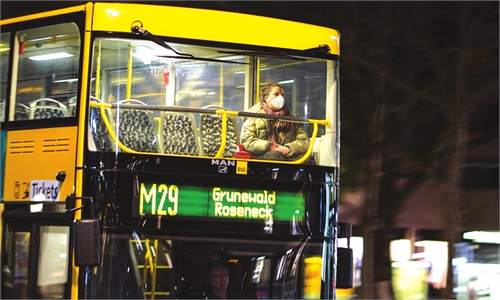
A cyclist wearing face mask is seen near the Brandenburger Gate in Berlin, capital of Germany, March 28, 2020.(Photo: Xinhua)
Germany was expected to upgrade its growth forecast for 2021 on Tuesday, offering a glimpse of light at the end of the coronavirus pandemic tunnel as vaccinations finally begin to gather pace in Europe's biggest economy.
"There are reasons to be optimistic," Economy Minister Peter Altmaier said.
"In January, we forecast growth of 3.0 percent. Current data show that it will even be slightly higher," Altmaier said in an interview with the Funke media group.
Europe's biggest economy contracted by 4.9 percent in 2020 as the pandemic idled entire sectors and upended hundreds of thousands of businesses.
With Germany still firmly in the clutches of a third wave of the pandemic, the country is expected to report weak data for the first three months of the year.
But the rhythm of vaccinations is accelerating after a stuttering start, with hundreds of thousands of jabs being administered daily in recent days.
The mass inoculations could help accelerate a return to some normalcy after more than a year of open and close swings to halt COVID-19.
Major economic think tanks have already delivered a more optimistic forecast than the government, having already predicted growth of 3.7 percent for the year.
"Once the risk of infections is removed, the economy will show a strong recovery," they said.
Germany came through the first wave of the pandemic relatively unscathed, but authorities have struggled for months to put in place concerted action to stop the current wave.
On Saturday, a new amended law came in force, giving Chancellor Angela Merkel's government more powers to impose restrictions including night curfews and school closures.
The law ends a tug of war between the federal government and Germany's 16 states which had in recent months resulted in an often confusing patchwork of restrictions being implemented - with some states with higher infection rates allowing shops to open while others are closing kindergartens.
Under the new regulation, all regions with incidence rates of more than 100 new infections per 100,000 people over the last seven days are applying sweeping shutdowns and overnight curfews.


